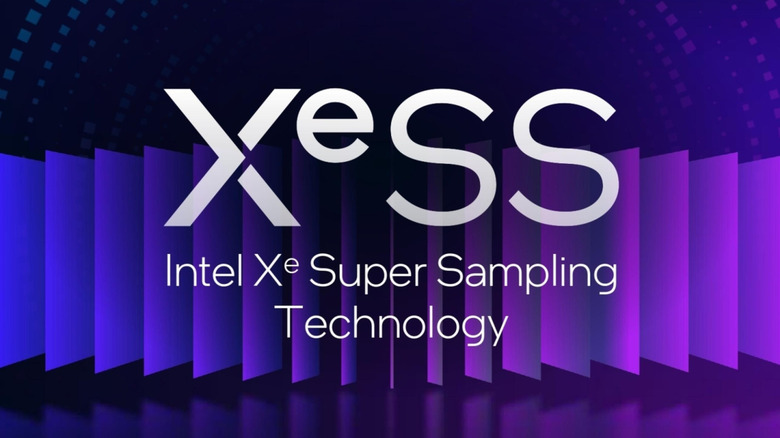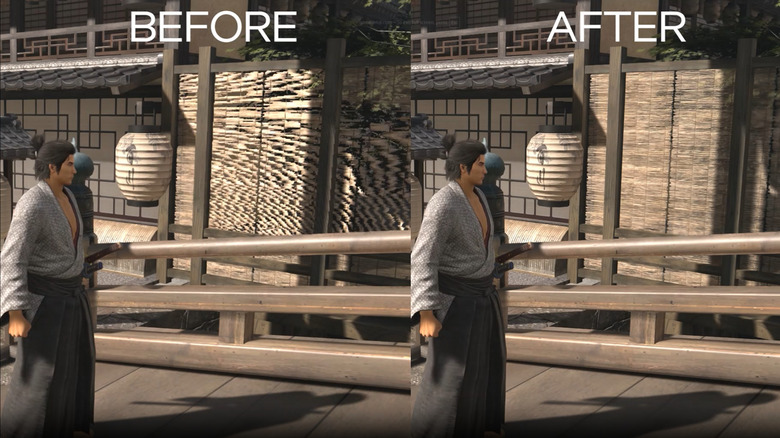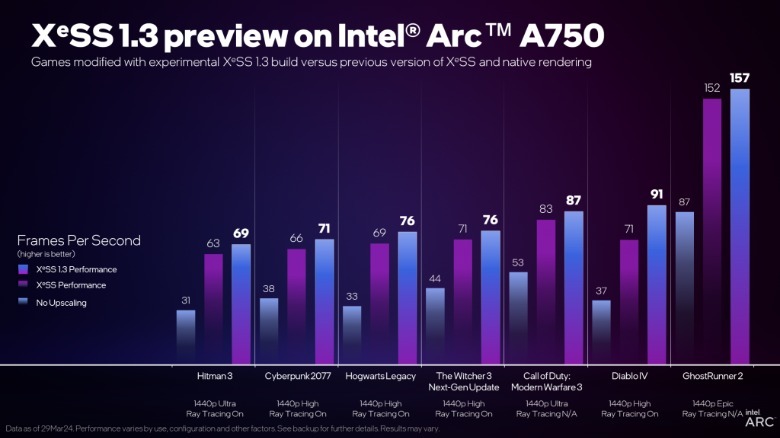What Is Intel XeSS, And How Does It Compare To Similar AMD & Nvidia Tech?
Some would consider Intel a newcomer in the discrete graphics market, with only two generations of GPUs under its belt. Even as the underdog compared to veterans like Nvidia and AMD, Intel has achieved more than expected. Not only has it developed its own graphics architecture from scratch, but it has also introduced XeSS, Intel's answer to upscaling tech like Nvidia DLSS and AMD FSR.
XeSS (Xe Super Sampling) is Intel's AI-based upscaling technology that uses proprietary XMX cores and advanced algorithms to boost resolution, sharpness, and overall visual fidelity. In an era where gamers demand 1440p or 4K visuals without sacrificing performance, technologies like XeSS help bridge the gap on lower-end hardware. It works by rendering a game at a lower resolution, such as 1080p, and upscaling it to a higher output, resulting in smoother frame rates and a sharper image. Like any upscaling tech, it comes with quality, balanced, and performance modes.
What sets XeSS apart is its openness: While Nvidia's DLSS only runs on RTX GPUs equipped with Tensor Cores, XeSS can fall back on standard shader cores using the DP4A instruction set when XMX cores aren't present. That means it's compatible not just with Intel's Arc GPUs, but also with many AMD and Nvidia graphics cards. This broader compatibility gives XeSS a much wider reach, especially among gamers with older or budget hardware.
How does it stack up against FSR and DLSS?
Comparing XeSS to DLSS and FSR isn't straightforward, as each upscaling tech comes in multiple versions. Early iterations of AMD's FSR (like 2.0 and 3.1) used simpler algorithm-based techniques that struggled to match the image quality of DLSS and XeSS. FSR 4.0, AMD's latest version, is far more advanced — but it only works on Radeon RX 9000 series GPUs.
Nvidia still leads in visual quality and motion clarity, especially with DLSS 3.5 and above. However, according to Hardware Unboxed, XeSS 1.3 can outperform older versions of FSR (3.1 or earlier) in certain titles, particularly at lower resolutions like 1440p. It delivers sharper images and fewer motion artifacts in games such as "Rachet & Clank: Rift Apart." That said, in titles like "Ghost of Tsushima," FSR 3.1 maintains the upper hand.
While Intel's Arc GPUs are still maturing, some titles have already implemented the latest XeSS 2.0, announced alongside Intel's upcoming Battlemage GPU lineup. Games like "F1 2024," "Diablo IV," and "Assassin's Creed: Shadows" are among the early adopters. According to Videocardz, XeSS 2 is now available in over 19 titles, bringing the total number of games supporting XeSS to more than 200.
The next-gen version brings frame generation and low-latency enhancements that could push it closer to competing with the DLSS 4 and FSR 4.0 software stacks. The biggest hurdle for Intel, however, remains market share. With so few Intel GPUs out in the wild, developers have little incentive to optimize for XeSS. But Intel's open-source approach gives it a surprising edge; its tech can improve visuals even on older AMD and Nvidia GPUs, making it more appealing to gamers and studios alike.


